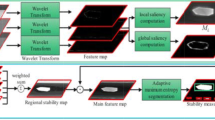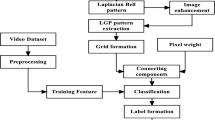Abstract
Due to the continuous growth of the world’s population, the development and utilization of marine resources have received great attention. At present, marine fishing relies heavily on divers for underwater operations, which have the disadvantages of high risk, low efficiency, and high cost. Therefore, the development of underwater capture robot which can automatically detect, locate, and capture targets is of great significance for the development of marine economy. Underwater robot is an indispensable equipment for deep-sea operation and plays an irreplaceable role in the development of the ocean. When autonomous underwater vehicles perform underwater operations, they can use computer vision system to obtain clear underwater images and accurate target category information, which can help the manipulator select different grasping parts for different shapes and categories and improve work efficiency. The current underwater vision technology includes “acoustic vision” and “light vision.” Due to the influence of multichannel effect and blind area, the acoustic vision research in detecting and tracking underwater targets is not deep enough. Compared with the acoustic image processing system, the underwater optical vision system has the advantages of image and video capture and has higher real-time performance, which can aim at the target faster and more conveniently. Underwater vision optical system plays an important leading role in the detailed research of underwater vehicle sensing system, which can further improve the autonomous performance of underwater vehicle. In addition, considering the nature of underwater image imaging, we are developing an underwater image segmentation and recognition system based on image processing.








Similar content being viewed by others
Change history
30 December 2021
This article has been retracted. Please see the Retraction Notice for more detail: https://doi.org/10.1007/s12517-021-09350-y
28 September 2021
An Editorial Expression of Concern to this paper has been published: https://doi.org/10.1007/s12517-021-08471-8
References
Ahmad S, Ahmad S S, Faisal S et al (2019) Automatic fish detection in underwater videos by a deep neuralnetwork-based hybrid motionlearning system[J]. ICESJ Mar Sci 2019
Arnéodo A, Decoster N, Roux SG (2000) A wavelet-based method formultifractal image analysis. I. Methodology and test applications on isotropicand anisotropic random rough surfaces. Europ Phy J B 2000(15):567–600
Biney CA, Christopher AB (1991) Trace metal concentrations in fish and sediments from the WIWI: a small urban river in Kumasi, Ghana. Trop Ecol 32(2):197–206
Chadha DK (1999) A proposed new diagram for geochemical classification of natural waters and interpretation of chemical data. Hydrogeol J 7(5):431–439
Chadha DK (1999) A proposed new diagram for geochemical classification of natural waters and interpretation of chemical data. Hydrogeol J 7(5):431–439
Chen Z, Wang H, Xu L et al (2014) Visual-adaptation-mechanism based underwater object extraction[J]. Opt Laser Technol 56:119–130
Dai C, Lin M, Wang Z et al (2018) Underwater image enhancement based on bright channel color compensation and fusion [J]. Acta Optica Sinica 38(11):86–95
Demirel S, Tuzen M, Saracoglu S, Soylak M (2008) Evaluation of various digestion procedures for trace element contents of some food materials. J Hazard Mater 152(3):1020–1026
Drury CF, Voroney RP, Beauchamp EG (1991) Availability of NH4+-N to microorganisms and the soil internal N cycle. Soil Biol Biochem 23(2):165–169
Duan J, Bressan M, Dance C et al (2010) Tone-mapping high dynamicrange images by novel histogram adjustment[J]. Pattern Recognition 43(5):1847–1862
Edet AE, Offiong OE (2002) Evaluation of water quality pollution indices for heavy metal contamination monitoring. A study case from Akpabuyo-Odukpani area, Lower Cross River Basin (southeastern Nigeria). GeoJournal 57:295–304
Ediagbonya TF, Nmema E, Nwachukwu PC, Teniola OD (2015) Identification and quantification of heavy metals, coliforms and anions in water bodies using enrichment factors. J Environ Anal Chem 2:146
Fabbri C, Islam M J, Sattar J (2018) Enhancingunderwater imagery using generative adversarial networks[C] 2018 IEEEInternational Conference on Robotics and Automation (ICRA). Brisbane, QLD, Australia: IEEE 2018:7159–7165
Girshick R, Donahue J, Darrell T et al (2014) Rich feature hierarchies for accurate object detection and semanticsegmentation[C]. IEEE Conference on Computer Vision & Pattern Recognition.Columbus, OH, USA: IEEE, 2014:580–587
Godt J, Scheidig F, Grosse-Siestrup C, Esche V, Brandenburg P, Reich A, Groneberg DA (2006) The toxicity of cadmium and resulting hazards for human health. J Occup Med Toxicol 1(1):1–6
He K, Sun J, Tang X et al (2011) Single imagehaze removal using dark channel prior[J]. IEEE Transactions on Pattern Analysis & Machine Intelligence 33(12):2341–2353
Huang D, Wang F, Song W, et al (2018) Underwater image enhancement with adaptive histogram stretching under different color models [J]. Chinese J Image Grap 023(005):640–651
Huang SW, Jin JY (2008) Status of heavy metals in agricultural soils as affected by different patterns of land use. Environ Monit Assess 139(1):317–327
Hummel R (1977) Image enhancement by histogram transformation[J].Computer Graphics and Image Processing 6(2):184–195
JahicB, Guelfi N, Ries B (2019) Software engineering for dataset augmentation using generative adversarial networks[C] 10th IEEE International Conference on Software Engineering and Service Science. Beijing, China: IEEE 2019:59–66
Jian M, Qi Q, Yu H et al (2019) The extended marine underwater environment database and baseline evaluations[J]. Appl Soft Comput 80:425–437
Karim Z (2011) Risk assessment of dissolved trace metals in drinking water of Karachi, Pakistan. Bull Environ Contam Toxicol 86(6):676–678
Khalid S, Shahid M, Dumat C, Niazi NK, Bibi I, Gul Bakhat HFS, Abbas G, Murtaza B, Javeed HMR (2017) Influence of groundwater and wastewater irrigation on lead accumulation in soil and vegetables: implications for health risk assessment and phytoremediation. Int J Phytoremed 19(11):1037–1046
Konovalov DA, Saleh A, Bradley M et al (2019) Underwater fish detection with weak multi-domain supervision[C]. Int Joint Conference on Neural Networks. Budapest, Hungary: IEEE, 2019:1–8
Lei F, Zhu L, Wang X (2018) Research on underwater color imagewith improved multi-scale Retinex color gray scale [J]. Small microcomputersystem 039(001):185–188
Li H, Yu B (2003) A new image segmentation algorithm based on new multifractal features. Opt Prec Eng 12(6):627–631
Li Q, Wang M (2000) Fast recognition method of fruit defects based on fractal features. Chinese J Ima Grap 5(2):144–148
Ma M, Huang L (2019). Improved underwater image restoration algorithm based on dark channel a priori [J]. Modern Computer (Professional Edition), 637(01):82–85
Magesh NS, Chandrasekar N, Elango L (2017) Trace element concentrations in the groundwater of the Tamiraparani river basin, South India: insights from human health risk and multivariate statistical techniques. Chemosphere 185:468–479
Mahmood A Bennamoun M, An S et al (2016) Coral classification with hybrid feature representations[C]. 2016 IEEE International Conference on Image Processing (ICIP). Phoenix, AZ, USA: IEEE 2016:519–523
Muhammad N, Banoori N, Akbar A, Azizullah A, Khan M, Qasim M, Rahman H (2016) Microbial and toxic metal contamination in well drinking water: potential health risk in selected areas of Kohat, Pakistan. Urban Water J 28:1–7
Nawab J, Khan S, Ali S, Sher H, Rehman Z, Khan K, Tang J, Ahmad A (2016) Risk assessment of heavy metals and biological contamination in drinking water of Malakand Agency, Northern Pakistan. Environ Monit Assess 188:286. https://doi.org/10.1007/s10661-016-5296-1
O’Byrne M, Vikram P, Franck S et al (2018) Semantic segmentation of underwater imagery usingd eep networks trained on synthetic imagery[J].J Mar Sci Eng 6(3):93–102
Panda B, Chidambaram S, Thivya C, Thilagavathi R, Tirumalesh K, Devaraj N (2020) An attempt to determine the behavior of metals and their dependent thermodynamic saturation states in the groundwater along mountain front and riparian zone. Environ Earth Sci 79(1):17
Papanikolaou NC, Hatzidaki EG, Belivanis S, Tzanakakis GN, Tsatsakis AM (2005) Lead toxicity update. A brief review. Med Sci Monit 11(10):329–336
Prasad B, Bose JM (2001) Evaluation of the heavy metal pollution index for surface and spring water near a limestone mining area of the lower Himalayas. Environ Geol 41:183–188
Prasanna MV, Praveena SM, Chidambaram S, Nagarajan R, Elayaraja A (2012) Evaluation of water quality pollution for heavy metal contamination monitoring: a case study from Curtin Lake, Miri City, East Malaysia. Environ Earth Sci 67:1987–2001. https://doi.org/10.1007/s12665012-1639-6
Puthiyasekar C, Neelakandan MA, Poongothai S (2010) Heavy metal contamination in bore water due to industrial pollution and polluted and non-polluted seawater intrusion in Thoothukudi and Tirunelveli of South Tamil Nadu, India. Bull Environ Contam Toxicol 85:598–601. https://doi.org/10.1007/s00128-010-0152-4
Qin H Xiu L, Jian L et al (2016) DeepFish: accurateunderwater live fishrecognition with a deep architecture[J]. Neurocomputing 187:49–58
Qiu Z, Yao Y, Zhong M (2019) Underwater sea cucumbers detection basedon pruned SSD[C]. 2019 IEEE 3rdAdvanced Information Management, Communicates, Electronic and Automation Control Conference (IMCEC). Chongqing, China: IEEE 2019:738–742
Rahman ZU, Jobson DJ, Woodell GA (2011) Investigating the relationshipbetween image enhancement andimage compression in the context of the multi-scale Retinex[J]. J Vis Commun Image Represent 22(3):237–250
Rattan RK, Datta SP, Chhonkar PK, Suribabu K, Singh AK (2005) Long-term impact of irrigation with sewage effluents on heavy metal content in soils, crops and groundwater—a case study. Agric Ecosyst Environ 109(3-4):310–322
Ravindra K, Mor S (2019) Distribution and health risk assessment of arsenic and selected heavy metals in groundwater of Chandigarh, India. Environ Pollut 250:820–830
Ren S, He K, Girshick R, et al (2015) FasterR-CNN: towards real-time object detection with region proposal networks[C]International Conference on Neural Information Processing Systems. IEEE, 2015:1137–1149
Salman A, Jalal A, Shafait F et al (2016) Fishspecies classification in unconstrained underwater environments based on deeplearning[J]. Limnol Oceanogr Methods 14(9)
Selvam S, Venkatramanan S, Singaraja C (2015) A GIS-based assessment of water quality pollution indices for heavy metal contamination in Tuticorin Corporation, Tamilnadu. India Arab J Geosci 8:10611–10623. https://doi.org/10.1007/s12517-015-1968-3
Shi Z, Zhou J, Fu Q (2006). Analysis and Simulation of sea clutter characteristics based on multifractal model. J Syst Simu 8(8):2289–2292
Tang Z, Zhou B, Dai X et al(2018) Vision enhancement of underwater vehicle based on improved DCPalgorithm [J]. Robot 040(002):222–230
Ukah BU, Egbueri JC, Unigwe CO, Ubido OE (2019) Extent of heavy metals pollution and health risk assessment of groundwater in a densely populated industrial area, Lagos, Nigeria. Int J Energy Water Res 3(4):291–303
Wang Y, Fu L, Liu K et al (2015) Stable underwater image segmentation in highquality via MRF model[C] OCEANS 2015 - MTS/IEEE Washington. Washington, DC, USA: IEEE 2015:1–4
Xu W, Matzner S (2018) Underwater fish detection using deep learning for water power applications[C] 5th Annual Conf. on Computational Science & Computational Intelligence (CSCI’18). Las Vegas, NV, USA: IEEE 2018:313–318
Xu Y, Sun M (2016). Underwater image enhancement method based on convolutional neural network [J]. J Jilin Univ Eng Ed 48(06):272–280
Zheng H, Sun X, Zheng B et al (2015) Underwater image segmentation via dark channel prior and multiscalehierarchical decomposition[C] OCEANS2015-Genova. Genoa, Italy: IEEE 2015:1–4
Author information
Authors and Affiliations
Corresponding author
Ethics declarations
Conflict of interest
The authors declare that they have no competing interests.
Open access
This article is licensed under a Creative Commons Attribution 4.0 International License, which permits use, sharing, adaptation, distribution, and reproduction in any medium or format; as long as you give appropriate credit to the original author(s) and the source, provide a link to the Creative Commons license and indicate if changes were made. The images or other third party material in this article is included in the article’s Creative Commons license, unless indicated otherwise in a credit line to the material. If material is not included in the article’s Creative Commons license and your intended use is not permitted by statutory regulation or exceeds the permitted use, you will need to obtain permission directly from the copyright holder. To view a copy of this license, visit http://creativecommons.org/licenses/by/4.0/.
Additional information
Responsible Editor: Sheldon Williamson
This article is part of the Topical Collection on Environment and Low Carbon Transportation
This article has been retracted. Please see the retraction notice for more detail: https://doi.org/10.1007/s12517-021-09350-y
About this article
Cite this article
Wenjuan, M., Feng, X. RETRACTED ARTICLE: Underwater image segmentation based on computer vision and research on recognition algorithm. Arab J Geosci 14, 1836 (2021). https://doi.org/10.1007/s12517-021-08081-4
Received:
Accepted:
Published:
DOI: https://doi.org/10.1007/s12517-021-08081-4




